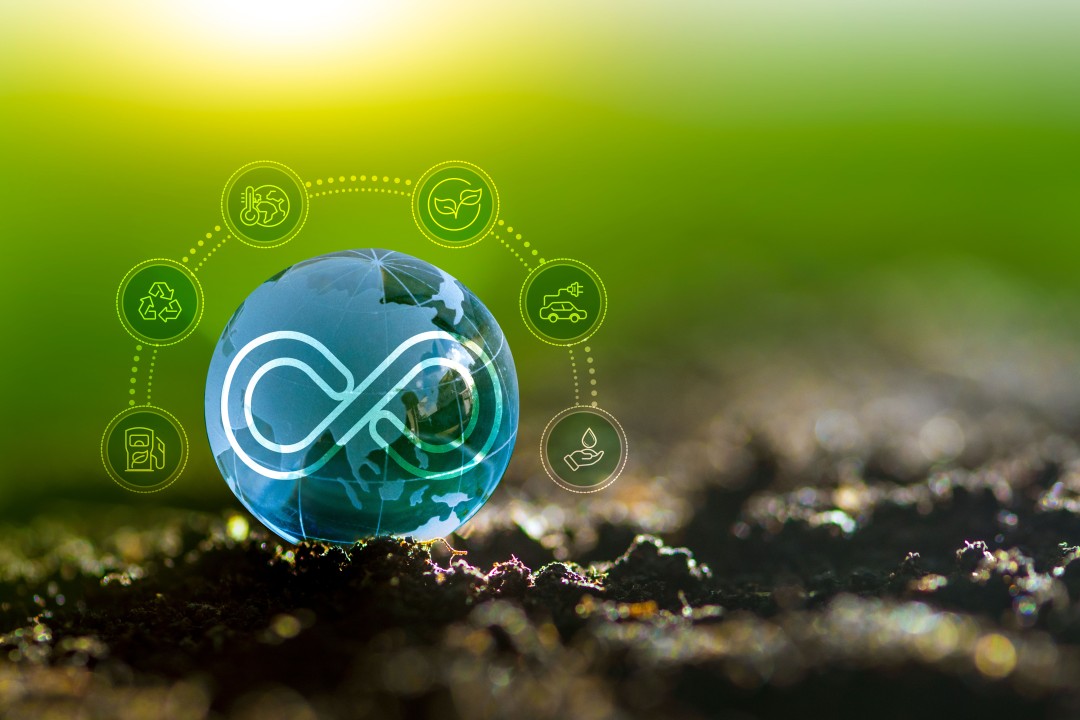
The circular economy, designed to be restorative and regenerative, strives for a zero-waste mission by circulating scarce resources through biological (natural decomposition) and technical (reuse, remanufacturing, refurbishing, and recycling) cycles in a closed-loop chain. Simultaneously, it emphasizes the continuity of economic development. Developed over the past decade to address global environmental degradation and resource depletion/scarcity resulting from industrial activities, the concept has gained significant traction.

While the circular economy has ascended to the status of a ‘megatrend,’ evidenced by a nearly threefold increase in discussions and articles over the past five years, signaling a notable surge in awareness and interest in circular practices, a significant paradox persists. The majority of materials introduced into the economy continue to be virgin, and the proportion of secondary materials has dwindled from 9.1% in 2018 to a concerning 7.2% in 2023.
Meanwhile, the total amount of materials consumed by the global economy continues to rise: in just the past six years alone, the global population has consumed over half a trillion tons of materials—nearly as much as the entirety of the 20th century.
Alarming statistics reveal a disconnect between lofty speeches, targets, and on-the-ground actions and measurable impacts. Without bold, urgent action, the world risks missing out on broader social and environmental goals.
Today, six of the nine critical ‘planetary boundaries’ measuring environmental health have been breached due to the linear ‘take-make-dispose’ economy.

Rooted in principles like eliminating waste and pollution, cultivating products at their highest value, and regenerating nature, the circular economy is crucial at this historical juncture.
While material consumption has historically elevated living standards, the acceleration in high-income countries no longer guarantees increased well-being. Unequal distribution of wealth and materials destabilizes society and strains Earth’s life support systems. Wealthier nations must abandon unrestricted material consumption for circular principles to boost development, resilience, and well-being.
To translate theory into action, governments and industries must break free from exploitative practices, placing people and the planet at the center. Achieving a just transition requires dismantling harmful processes and aligning policies with circular principles. Key steps include creating a level policy playing field, getting the economics right, and building circular expertise and skills.
For a just transition, a systemic approach is necessary in real-life applications of the circular economy. Ministries of Economy, Finance, and the Environment, business leaders, multilateral organizations, international financial institutions, and academia must collaborate to shift the focus to well-being within planetary boundaries. This involves setting mission-oriented targets, reforming international financial and trade architecture, getting the economics right, and fostering global collaboration for a people-centric circular economy transition.

I’ve spent the past 18+ years helping ports, supply chains, and global businesses turn sustainability goals into real, measurable results.
From leading billion-dollar infrastructure projects to building my own consulting firm, I’ve seen how the right strategy can turn pressure into opportunity.
My mission today is simple: help leaders like you build sustainable, future-ready businesses that don’t just check boxes—but actually make an impact. One decision, one project, one team at a time.
Let’s build what’s next—together.
Have a project or idea in mind?
I’d love to hear what you’re working on.
Book a quick call here